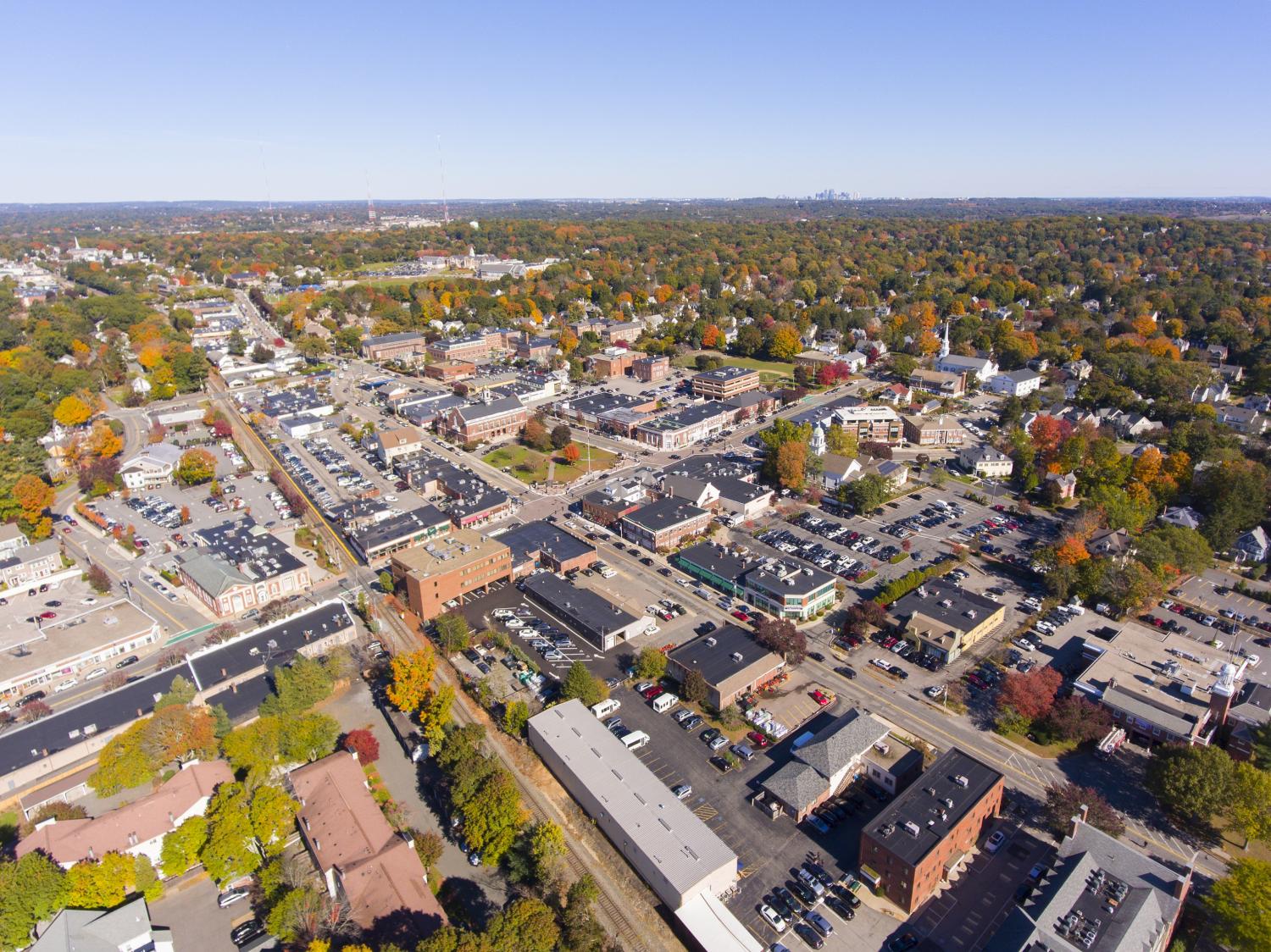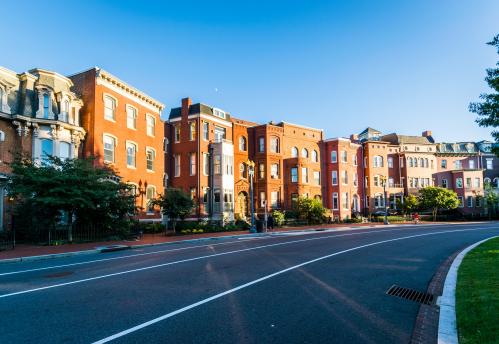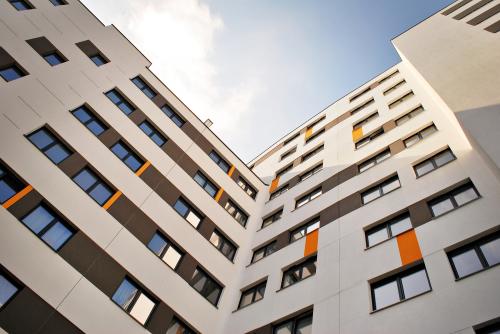Read the full report, Zoned Out: Why Massachusetts Needs to Legalize Apartments Near Transit.
Even during the economic expansion from 2009 to early 2020, Greater Boston didn’t build enough homes to keep up with demand. Meanwhile, housing prices increased 53% during this period, far outpacing household income growth. It’s a pattern that has emerged across many of the nation’s wealthy, economically vibrant metro areas, from California to Washington, D.C. But high housing costs and inadequate supply are not a natural outcome of market forces; they are the result of policy choices. Too many of the cities and towns in the Boston area and places like it have used zoning and other regulations to limit new housing development, especially of small, moderately priced homes.
Overly restrictive zoning by Boston’s suburbs creates three problems for the region. First, high housing costs impede the regional labor market, making it harder for employers to hire and retain workers. Second, limiting housing development near job centers and public transit leads more workers to undertake long-distance solo car commutes, worsening traffic and creating harmful environmental impacts. Third, exclusionary zoning by affluent, mostly white communities exacerbates racial and economic segregation in the region, limiting Black and Latino or Hispanic families’ access to high-opportunity communities.
This tension between local control over housing and these economic, environmental, and social harms is not new. Massachusetts and its constituent local governments have been locked in a legal and political tug-of-war since at least 1969, when the state’s widely known affordable housing remedy, Chapter 40B, was adopted. While public attention is now rightly focused on immediate challenges related to COVID-19 and the economic slowdown, Massachusetts policymakers must also work to ensure better longer-run outcomes for the state’s residents. Changing the rules of housing development to allow moderately priced housing in high-opportunity communities is essential for a more equitable, resilient, and thriving region. In a new report, we propose one strategy to do that: a statewide policy legalizing development of moderate-density housing near transit stations.
Massachusetts’ expensive—but underused—land near commuter rail stations
A core principle of urban economics is that in places where land is expensive, developers will use smaller amounts of land per home. Depending on the context, this translates into smaller lots for single-family homes, or shifting toward structure types such as attached rowhouses and multifamily buildings. Land near transit stations is typically quite expensive, because being close to transit reduces commuting costs for households. Land is also more valuable in communities with good schools, low crime rates, and other locally provided amenities. Therefore, in well-functioning housing markets, we would expect to see high-density housing clustered around transit stations, especially in affluent communities with good schools.
Looking at housing density around commuter rail stations in Greater Boston shows very different patterns than what economists expect. Land is very expensive, but the housing is mostly low-density: single-family detached homes with large yards. The Massachusetts Housing Partnership’s TODEX dataset shows that the median housing density near commuter rail stations is 2.8 homes per acre—equivalent to single-family homes on one-third acre lots. This isn’t a market outcome—it’s a sign that zoning is preventing housing markets from working.

To allow for more housing to be built in high-demand locations, the state of Massachusetts should adopt a policy that allows moderate-density housing to be built as-of-right within a half mile of transit stations. Moderate-density housing includes duplexes, attached townhouses, and low- to mid-rise multifamily buildings. To illustrate how this could create more—and more affordable—homes, we analyzed what the policy would look like on the ground near four representative commuter rail stations: Beverly Farms, Melrose Cedar Park, Needham Heights, and Wellesley Hills.
Beverly Farms and Wellesley Hills are surrounded by very low-density housing, with typical lot sizes well over half an acre (Figure 2). These lots could easily accommodate five side-by-side townhouses, or more than 10 two-bedroom condos in low-rise multifamily buildings. In Needham Heights, the typical single-family lot is about half the size as Beverly Farms, but could still accommodate six condos. Melrose Cedar Park has the smallest existing lot size, so it would offer the least potential for additional housing.
Several homes on expensive land reduces the cost of each home
Allowing more homes to be built on a single piece of land can substantially reduce the cost of new homes, especially in locations where land is expensive. An acre of land near the Wellesley Hills station is worth $1.5 million, so the cost of acquiring a typical single-family lot is about $850,000, even before construction begins. After adding in other development costs (e.g., materials and labor, financing, insurance, developer profits), a newly built single-family house near Wellesley Hills station can cost nearly $2 million (Figure 3).

Building five townhouses on the same sized lot allows land costs to be spread across five homebuyers, who would pay around $830,000 per home—a big discount from the single-family price. A low-rise condo building reduces per-unit costs even further, with land costs divided among 11 homebuyers, each paying $500,000. While these prices would be out of reach for low- and moderate-income households, they represent substantial discounts over the homes currently available in these affluent communities.
Moderate-density housing makes exclusive communities more affordable
Allowing the development of moderate-density homes offers the greatest potential affordability gains in places where housing prices are highest. Comparing the per-unit prices of new townhouses and condos to the distribution of existing home values in each community shows that Wellesley and Needham have the most to gain from smaller homes. The median existing home in Wellesley is worth $1.1 million—nearly $300,000 more than a newly built townhouse and more than twice the price of a new condo. New condos priced at $500,000 would be quite a bargain, falling into the lowest quartile price compared to existing Wellesley homes. New condos in Needham would also be in the lowest quartile of home values (nearly $300,000 below the median), while new townhouses would cost only slightly above the median.

Building lower-cost housing would make Wellesley and Needham affordable to households who currently can’t purchase homes there. In both locations, a new condo would be affordable to a household earning around $90,000 a year, which is about half as much as the median income of Wellesley’s current residents ($188,000) and 60% of the median income in Needham ($153,000). Introducing smaller housing types to these communities is essential to achieving more economically and socially diverse populations.
Existing home values in Beverly and Melrose are much lower than in Needham and Wellesley, so newly built townhouses and condos would not offer cost savings over the median value of existing homes. In fact, replacing older single-family homes with new, more expensive townhouses would slightly increase average housing prices in those communities. This process is all too familiar in the moderate-income Black and Latino or Hispanic communities around Boston that have seen most new housing development over the past decade.
Upzoning near transit stations allows more housing in places that build very little
Many of Boston’s affluent suburbs have such restrictive zoning that they are effectively “built out,” meaning that there is no legal capacity to create additional housing. A statewide policy allowing townhouses and apartments to replace single-family homes near transit would increase total housing capacity within walking distance of stations in communities that currently build little or no additional housing. Even using very conservative assumptions about how many single-family lots would be redeveloped, we estimate that allowing low-rise multifamily condos could generate between 200 and 600 new housing units within a half mile of each station over the next five years (Figure 5).

To put these numbers in context, between 2015 to 2019, Wellesley permitted roughly 300 new homes in the entire town—roughly the same number as our most conservative estimate for condo development just in one small neighborhood. All but two of Wellesley’s newly permitted homes were single-family (the most expensive structure type). During the same time period, Beverly and Melrose issued permits for fewer than 200 new housing units in their entire jurisdictions, while the town of Needham permitted nearly 600 units.
Our analysis only estimates how much additional housing could be built through replacing individual single-family homes with small-scale projects, but a statewide legalization of apartments near transit would also enable larger-scale housing development, including conversion of commercial properties into housing. These projects are more idiosyncratic and take longer to complete, so it is harder to predict when and where they will occur. Our estimates should be taken as a lower bound of how much housing could be built under statewide zoning reform.
More market-rate housing doesn’t solve every affordability problem, but it’s an essential first step
Like other high-cost coastal metro areas, Great Boston has two housing affordability problems. First, restrictive zoning drives up housing prices and limits development of new housing that is affordable to middle-income households. Second, low-income households earn too little to pay for market-rate housing. A statewide policy allowing moderate-density housing near transit stations would directly address the first problem by enabling construction of more homes, at lower price points, in places with very high demand.
This policy would not solve the affordability crisis for low-income households, although it would provide some help through two channels. Most directly, building multifamily housing in affluent suburbs could expand the ability of low-income households who receive federally subsidized vouchers to move into high-opportunity neighborhoods. By our calculations, the monthly costs associated with new condos in Wellesley and Needham fall below the Department of Housing and Urban Development’s Small Area Fair Market Rents in those communities, meaning that voucher holders could use vouchers to rent those condos. Currently, the lack of rental housing at almost any price point is a barrier to access in too many Boston suburbs.
Additionally, a statewide upzoning that allows developers to build in the most affluent, exclusive communities would take some of the pressure off moderate-income neighborhoods such as East Boston and Malden, which have been providing much of the region’s new housing. Allowing new construction in affluent, mostly white communities is one of the most effective ways to reduce the risk of gentrification and displacement in lower-income Black and Latino or Hispanic communities.
Alone, a larger supply of market-rate housing cannot address the fundamental problem that too many families earn too little money to afford decent-quality housing. For these families, direct financial support from the federal government—either though housing vouchers or income supplements—is the most effective way to close the gap between income and rent. Massachusetts’ state policymakers cannot compel Congress to expand federal subsidies. But they can and should tackle the decades-long local barriers to building more moderately priced homes.
The Brookings Institution is committed to quality, independence, and impact.
We are supported by a diverse array of funders. In line with our values and policies, each Brookings publication represents the sole views of its author(s).










